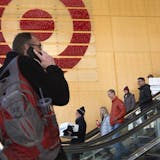When friends from Italy visit Minnesota, I try to impress them by showing off our great architecture: the State Capitol, the Cathedral of St. Paul, the spacious Basilica of St. Mary in Minneapolis.
"You know these are all just imitations of Italian buildings," they often respond. "You have seen St. Peter's in Rome, no?"
I reassess our vacation to include uniquely American experiences. We spend a day in the car. We get cash at a drive-through ATM to pay for coffee at a drive-up cafe, which we drink in the carwash. I roll up to the pharmacy window to pick up a prescription before parking at a drive-in restaurant to eat hamburgers. I push for an outdoor movie at the Vali-Hi Drive-In or the drive-in church in Crosslake, but my foreign friends beg for mercy.
Instead, we hit the open road to experience what is not just American, but truly Minnesotan. I bring them to attractions found only in our state. They are the icons of our storytelling and treasures that even Italy lacks.
One visitor, Sergio, took his nickname from the spaghetti western director Sergio Leone, so was disappointed that Minnesota was not the Wild West. Sergio wanted to dress like "real" Americans, so he wore a neon-hued Hawaiian shirt topped with a leather cowboy hat.
"I hear in America you can buy guns at shopping malls. Is this true?" he asked excitedly.
To avoid a road trip with an armed Italian, I stopped at a Western saddle shop on the way Up North instead. We parked next to a wooden fence where shoppers on horseback can tie up their ride, supposedly, in a world of SUVs. Inside, Sergio tried on cowboy shirts with rhinestone buttons and lapels embroidered with little horsie patterns.
The shopkeeper was a real Oklahoma cowboy who was Up North to shoe horses and worked in the shop on Saturdays. He wore beat-up Wrangler jeans, broken-in boots and a well-used straw hat. His calm Western accent floated gently next to Sergio's barrage of Italian.



